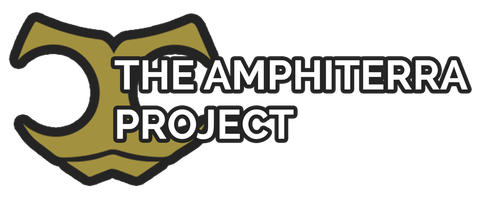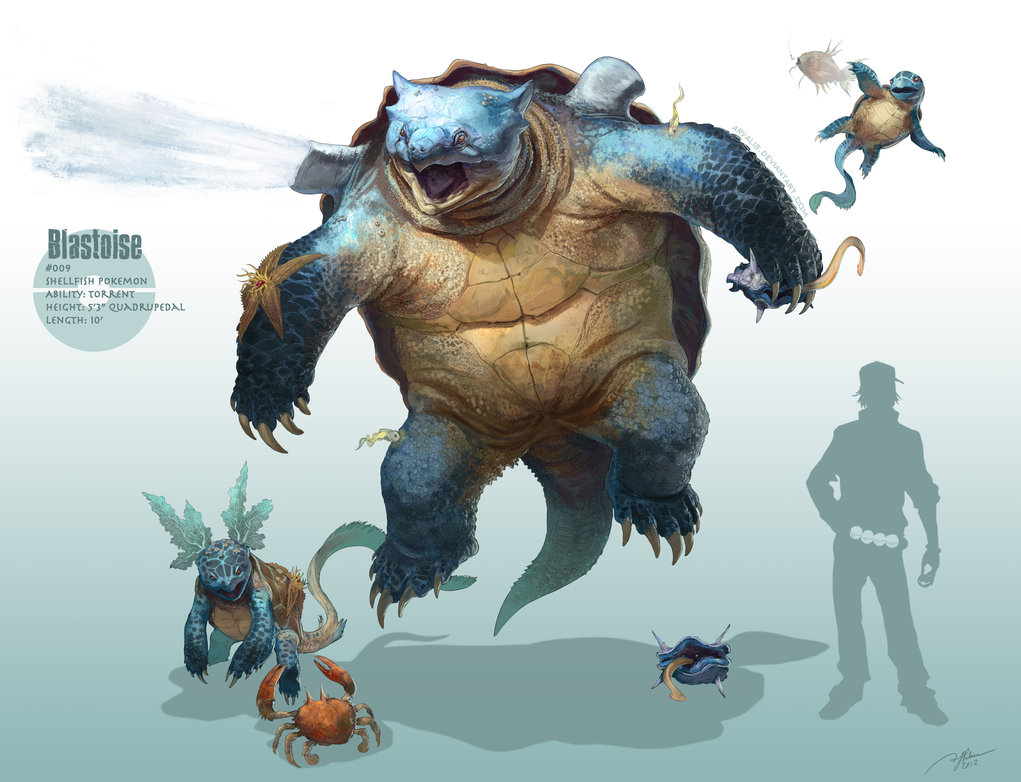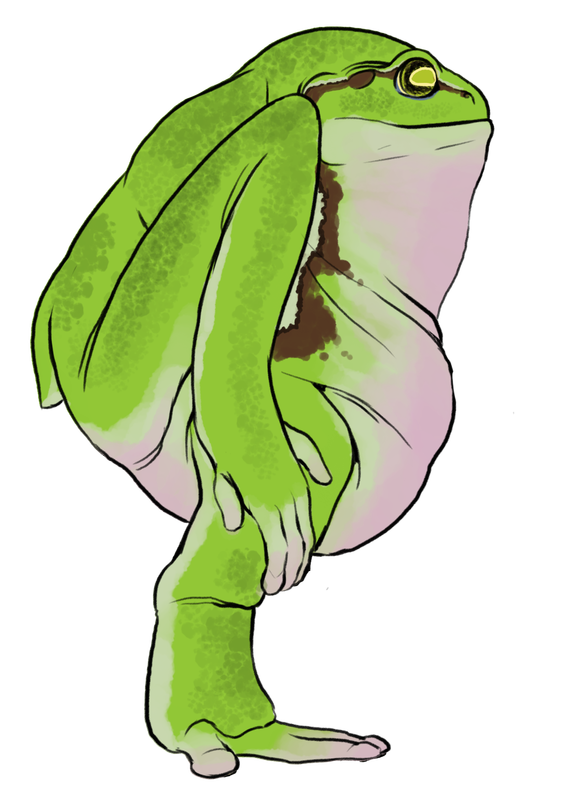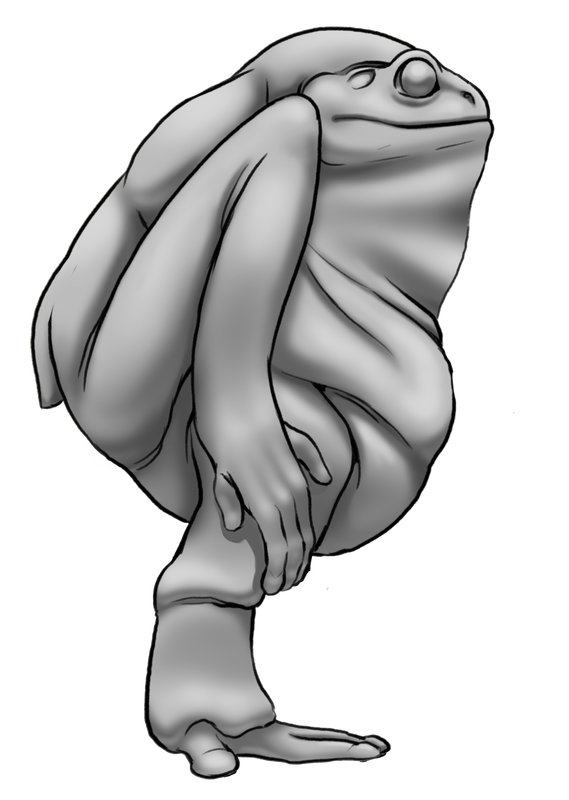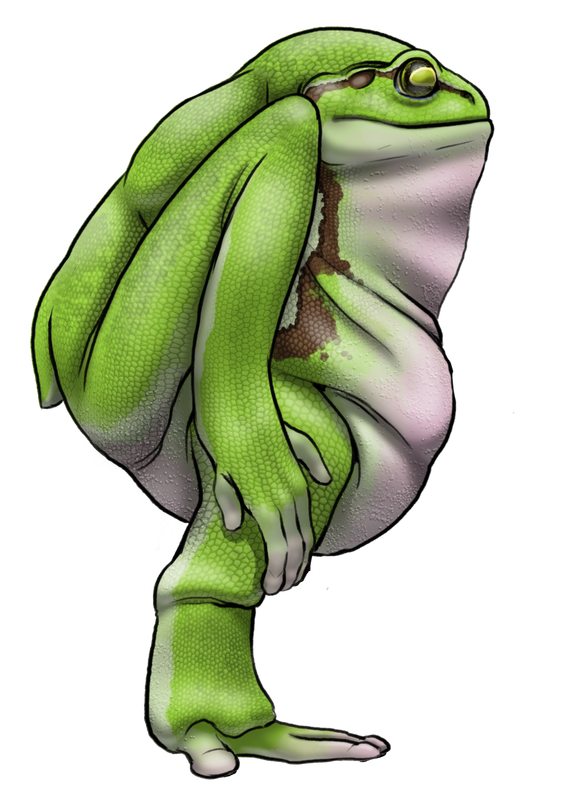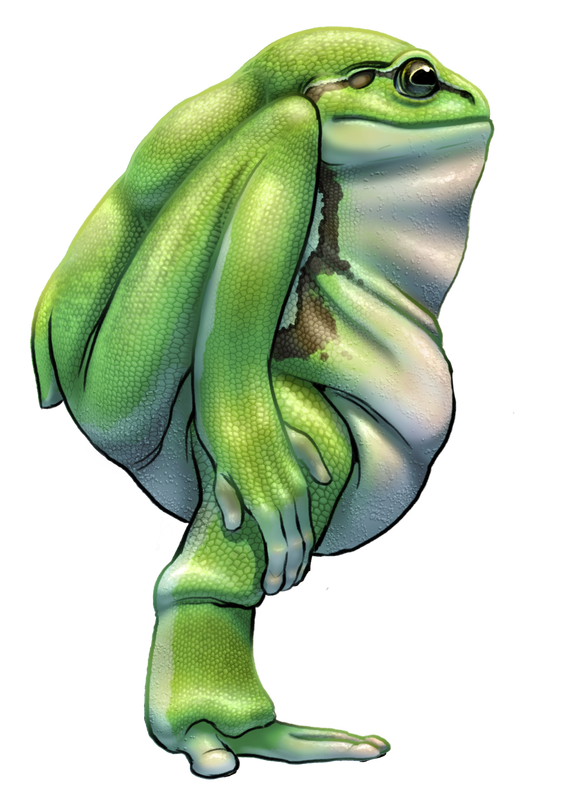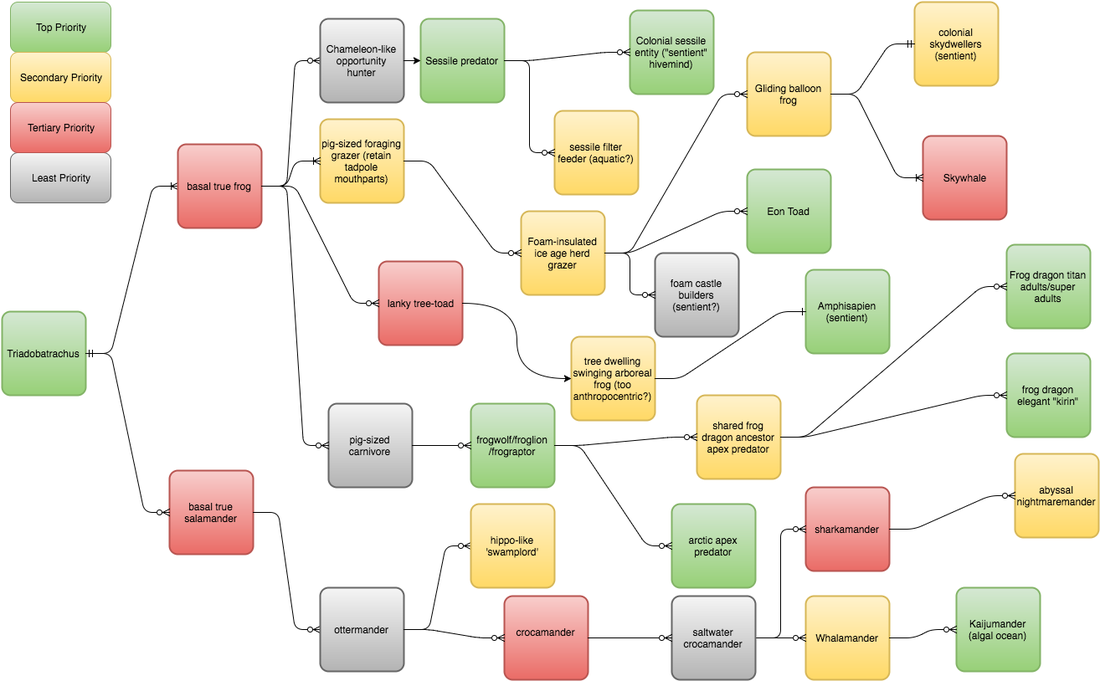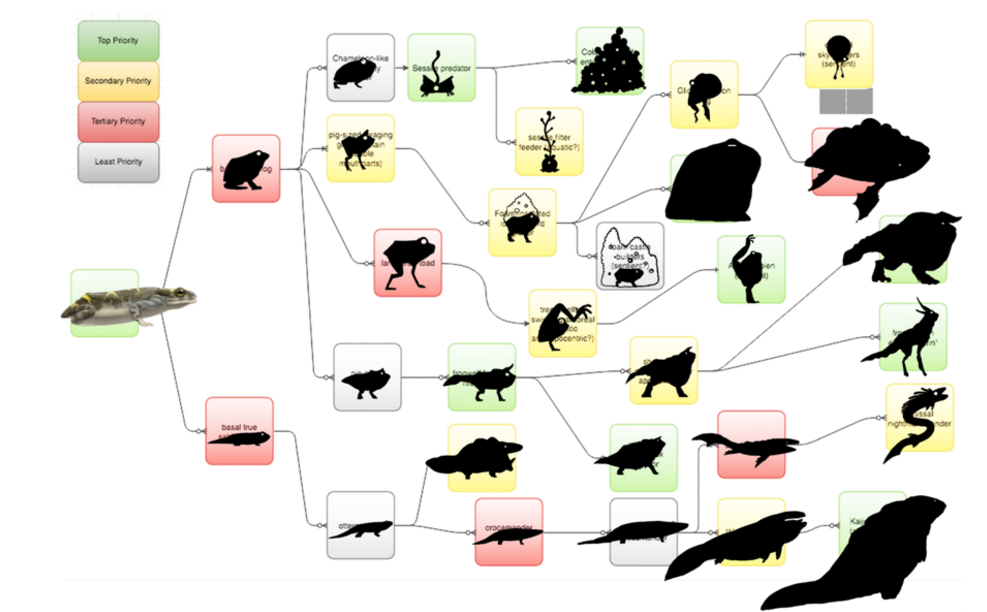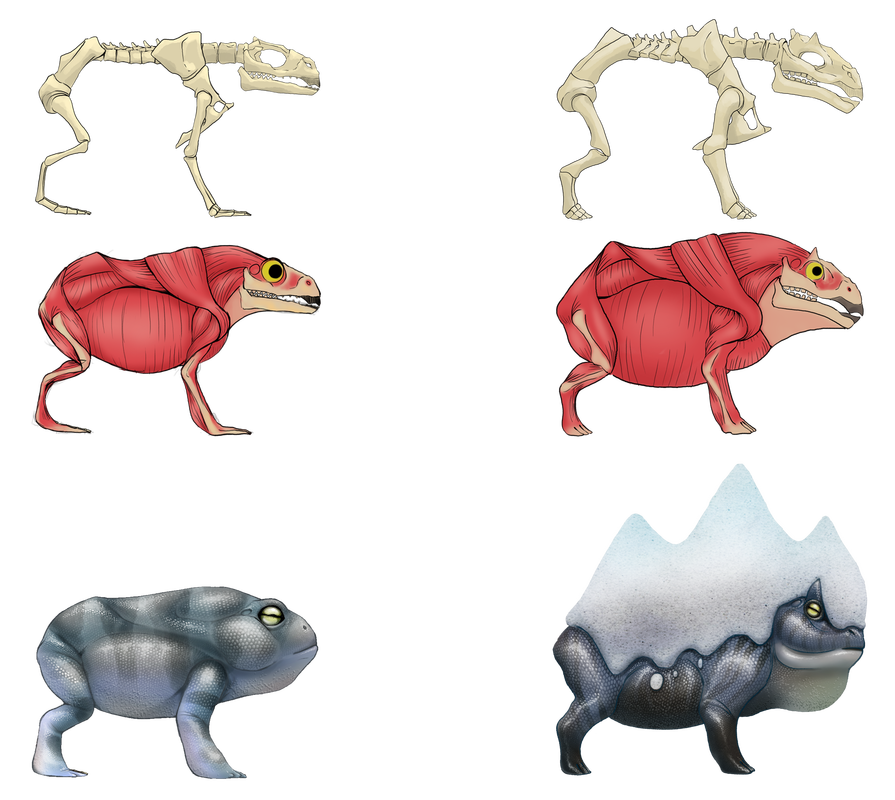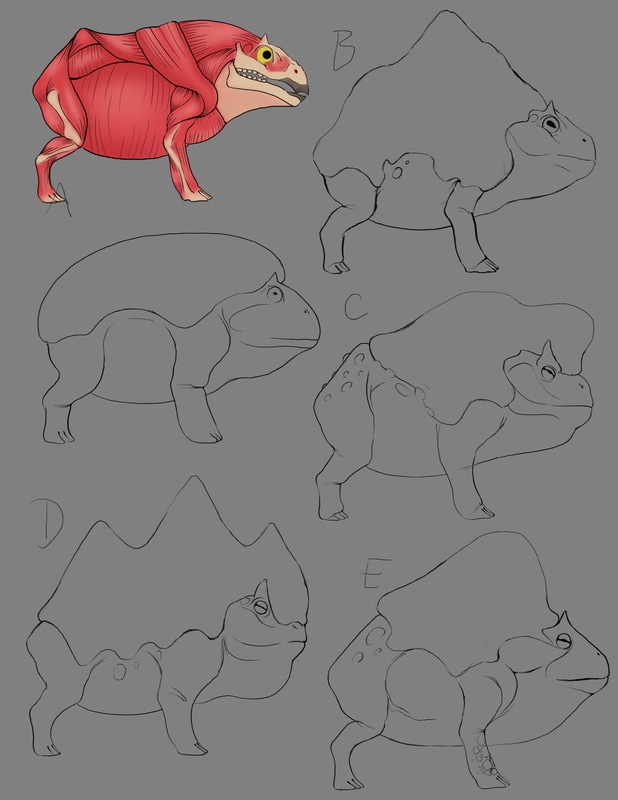Design
|
The method for rendering the creatures in Amphiterra is largely translated directly from the process developed by creature artist R.J. Palmer. His 'Realistic Pokémon' series was a big inspiration for the level of finish I wanted to achieve for my project, and, luckily, his process is well documented through his series of tutorials. By distilling the process of creature rendering into an almost mathematical process, the creatures can be presented efficiently, and, even more relevant to a concept art pipeline, is non-destructive, so iterations and adjustments are a snap.
The process begins with lineart and matte color, as detailed in the RESEARCH chapter. The next step is to build a greyscale volume for the creature. In keeping with the non-destructive process, each part of the lighting system is rendered on its own layer, with an opacity and blending mode unique to the element. In the order in which I create them, the layers are:
The final step is a curation and painting of the lineart while maintaining transparency. in places, the lineart flattens the image, but in others, deepens certain cavities and folds, so it's really on a case-by-case basis. The previous few paragraphs detail much of the actual execution of the creature designs, but the real meat of my thesis is in how one design can lead to another. Once I reconstructed Triadobatrachus into its final state, I looked at the project on a broader scale. I began thinking of rough ideas for creatures that I would want to design. Very rough blurbs, like 'pig-sized forager' or 'arctic predator'. I had a hard time at this point figuring out how they would relate to each other, until I realized I could organize them into a cladogram. Using the diagram software draw.io, I arranged and rearranged the ideas into a family tree that worked for me. AT this point, I also began to color-code my ideas. The most interesting ideas, in green would receive the most assets in terms of drawings, models, lore and illustrations. The yellow ideas would receive slightly less, followed by red, then grey. Some of my favorite ideas started as grey-priority, like the greater moistboy. From here, I roughed out silhouettes for the creatures, with each flowing from the design before it on the time axis of the chart.
I'm sure you'll notice a whole branch of descendence from Triadobatrachus has been omitted from the current release of Amphiterra. This was to be a marine-oriented, salamander-like branch, and I hope to execute it in the future.
Each new creature is to flow directly from the creature before it. The raw research comes heavily into play here, as the skeletal, muscular and exterior anatomy should be a reflection of the genetic stock of its ancestors as well as the climate and location it should find itself in. I also very much consider the body patterns we tend to see in certain ecological niches;= there are certain features that, for example,an arctic predator will have whether they be of mammalian, avian or amphibian stock. The exterior anatomy is concepted through a series of iterations drawn over the muscular anatomy of the creature.
Repeating this cycle about twenty times is how I created the twenty or so orthographic designs in the current iteration of Amphiterra. Based on their orthographic designs, I was ready to take some creatures to the next level, with pieces meant to bring the animals to 'life'. For some, this meant a dynamic ILLUSTRATION, and for others, a 3D MODEL.
|
